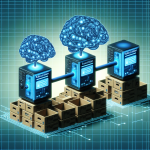Introduction to Customer Lifetime Value Prediction
Customer Lifetime Value (CLV) prediction is a crucial aspect of customer relationship management and digital marketing. It allows businesses to estimate the total revenue they can expect from a customer over the duration of their relationship. Accurately predicting CLV helps in strategic decision-making for marketing, sales, customer service, and product development.
With the advent of artificial intelligence (AI), predicting CLV has become more sophisticated and accurate. AI-powered models can analyze vast datasets, uncover hidden patterns, and deliver dynamic forecasts that adapt over time to changing customer behavior.
Why Is CLV Important?
Understanding CLV empowers businesses to:
- Identify high-value customers and allocate resources effectively
- Tailor marketing strategies for retention and upselling
- Reduce customer acquisition costs by targeting profitable segments
- Improve decision-making through actionable insights and personalization
Higher CLV generally translates to better return on investment (ROI), long-term profits, and stronger customer relationships.
How AI Enhances CLV Prediction
Traditional CLV models often rely on simple metrics like recency, frequency, and monetary value (RFM). While helpful, these models have limitations in scalability and adaptability. AI introduces a new level of intelligence and precision by leveraging:
Machine Learning Algorithms
AI-powered CLV prediction models use algorithms such as:
- Linear regression and decision trees
- Gradient boosting machines (e.g., XGBoost)
- Neural networks and deep learning
- Cluster analysis for customer segmentation
These models process historical data, customer interactions, demographic information, and transaction behavior to forecast future value.
Real-Time Data Processing
AI systems can continuously ingest and process live data streams, such as:
- Online behavioral data
- Purchase history
- Customer feedback and sentiment analysis
- Social media interactions
This ensures that CLV predictions remain current and responsive to customer behavior changes.
Building an AI-Driven CLV Model
Developing a reliable AI-powered CLV model typically involves the following steps:
1. Data Collection & Preprocessing
Gather data from various sources and clean it for inconsistencies. This may include:
- Transactional records
- User engagement data
- Customer support logs
2. Feature Engineering
Derive meaningful features that influence customer value, such as:
- Average order value
- Churn probability
- Time between purchases
3. Model Training & Validation
Split the data into training and test sets. Choose an appropriate model and optimize it through cross-validation and hyperparameter tuning.
4. Deployment & Monitoring
Deploy the model into production and monitor its performance. Continually retrain the model with new data to maintain accuracy.
Use Cases Across Industries
AI-driven CLV prediction is applicable in multiple sectors:
- Retail: Recommend products and personalize marketing
- Banking: Identify valuable customers for loan offers
- Telecom: Predict churn and implement retention strategies
- E-commerce: Target high-CLV customers with loyalty programs
Challenges and Considerations
Despite its benefits, CLV prediction using AI presents some challenges:
- Data privacy and compliance (e.g., GDPR)
- Bias in data leading to inaccurate predictions
- High costs for implementation and model maintenance
Businesses should adopt ethical AI practices and transparent model governance to mitigate risks.
The Future of CLV Prediction
As AI continues to evolve, CLV prediction models will become more autonomous and self-learning. Integration with Customer Data Platforms (CDPs), explainable AI (XAI), and advanced natural language processing (NLP) will enhance their interpretability and effectiveness.
Ultimately, AI-powered CLV prediction will empower businesses to foster long-term, profitable relationships with their customers—driving sustainable growth in an increasingly competitive landscape.





